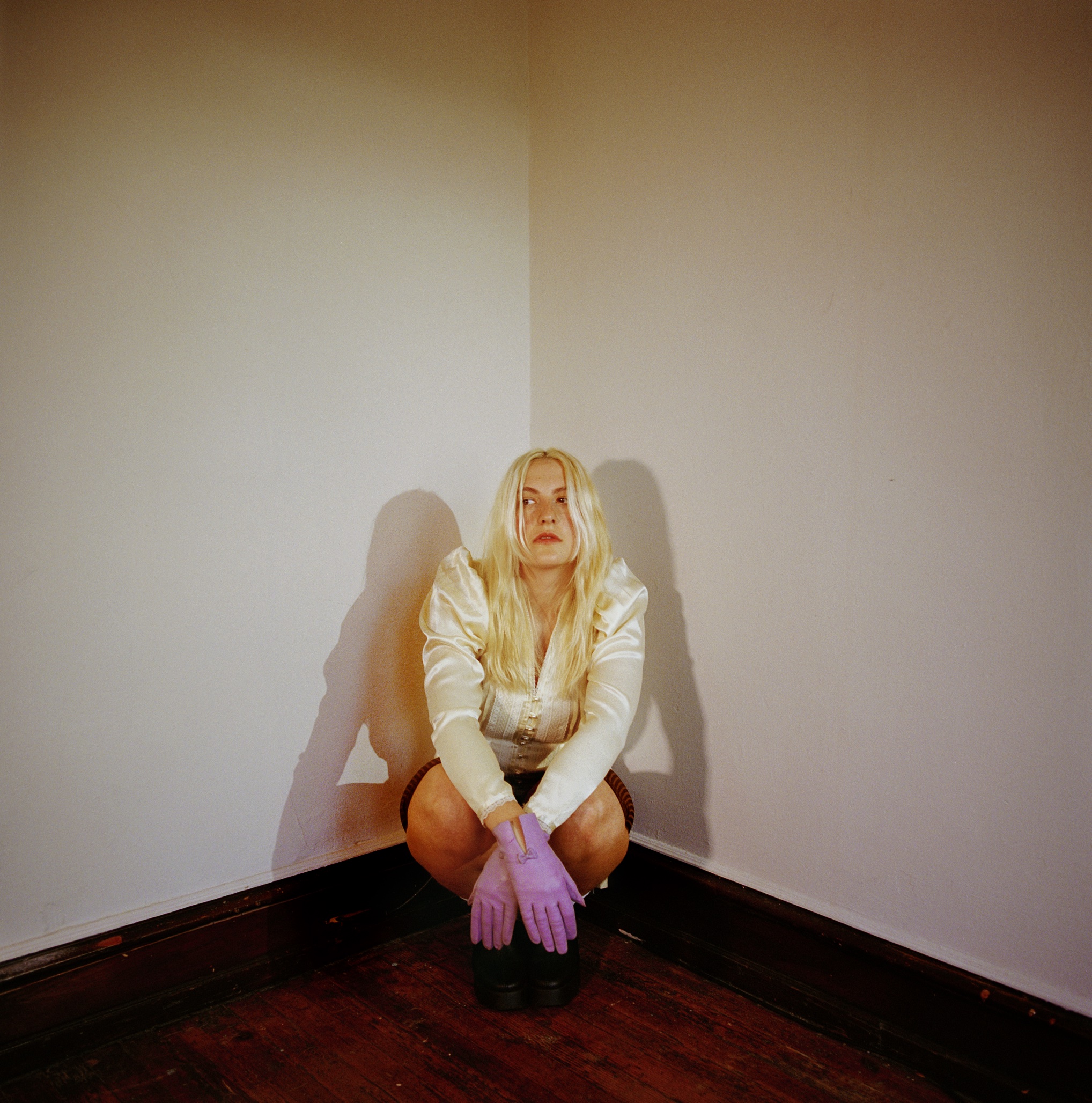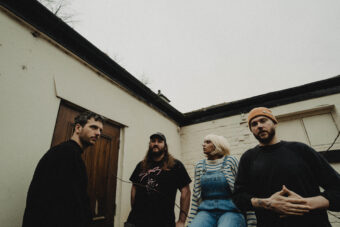When Doll Spirit Vessel played one of its first shows at buzzing Brooklyn DIY venue Rubulad in March, the band quickly captivated the attention of the crowded room. Sandwiched in an eclectic lineup of punk headliners My Son, The Doctor, alt-country band Drug Couple, and glam-folk indie rock act Matthew Danger Lippman, most in the audience had no idea what they were in for.
Doll Spirit Vessel stood out with the gentlest set, quickly making new fans who approached them post-set, remarking on that attention-grabbing first impression. Bandleader Kati Malison (rhymes with caddy) has a stunning voice that draws you in immediately, pairing just as well with the gentle instrumentations as it does with the band’s more raucous moments.
At the time, the band was billed under Malison’s name, with her announcing on stage that they were going to reveal the name on socials at a later date.
Over two months after the show, Malison tells SPIN that the name Doll Spirit Vessel has been on her mind for a while. She initially had thrown around the idea of giving her first band, Lost Dog, that moniker after finding an eBay listing of haunted dolls, but ultimately that band’s members came to the agreement that it sounded “too metal.”
Malison recorded Doll Spirit Vessel’s debut album What Stays in December 2020. In what she describes as a “classic pandemic story,” she found herself writing music throughout lockdown, and enlisted her best friends Lewis Brown (who was also in Lost Dog) and Max Holbrook to bring the songs to life. With Brown and Holbrook based on the West Coast at the time (Brown lives lived Portland, Oregon but now lives in Massachusetts and Holbrook was based in Northern California), Malison (who currently lives in Philadelphia) decided to drive from her former home of Brooklyn, recording it in Chiloquin, a picturesque town in Klamath County, Oregon.
“It was just like the most magical place,” says Malison. “We were in the middle of nowhere, just the three of us. It was two of the most beautiful weeks of my life.”

You can feel the essence of that setting in the record. On the album’s opening track “A Need,” the organ (an instrument that often feels morose) instead feels like bathing in sunshine, paired with dreamy guitar. That warm essence is also prevalent throughout the record—both in its sound and in the literal sense through song titles—from upbeat, guitar-driven “Sun Death,” to gauzy, gorgeous closer “A Light.”
While there are bits of the band that are reminiscent of Faye Webster and Waxahatchee, there’s a level of authenticity where the band isn’t trying to emulate anyone, but rather carving their own space with an attention-grabbing sound.
Malison notes that each band member has their own distinct interests that blend into Doll Spirit Vessel’s music. Holbrook, who plays guitar and keys, is a classically trained pianist who loves Chopin. “I feel like [that influence] is secretly everywhere,” she says. Whereas Brown is a “huge Steely Dan fan—from before it became cool to like them again” and grew up in the L.A. garage punk scene, while Malison adores Hop Along and Angel Olsen. “[Doll Spirit Vessel] was just going to be like anything goes, any idea could be brought to the table,” she notes.
As their first single, Doll Spirit Vessel went with “Train Brain Rot,” one of the poppier tracks on the record. Malison says it’s about when “you have an idea or a belief about yourself or about the world, and that belief is not serving you. But because it’s part of your identity, it’s hard to let go of.”
The track is so ridiculously catchy that it’ll stick in your brain long after playing it the first time, begging to be played again. But Malison admits that the song almost didn’t make it on What Stays because it’s so different from the rest of the album, and it took time to figure out how to write it. “I was like, ‘I don’t know if this even fits’ but it is such a lead single.”
Malison notes that part of What Stays is written about her struggles with memory. “I wrote the album at a time where I was realizing how differently my memory functioned. I think that in a lot of the songs, I was grappling with that and also trying to use songwriting to preserve the present,” she notes.
There’s a connection between that concept and the way the band approaches music, too.
“There’s some analogy to be made between my mind not being able to access conscious memories and us not consciously knowing what we were trying to channel, but it comes through anyway, like your body holds your memories even if you can’t remember them,” Malison says. “And we held all of our musical history and influences, even if we weren’t consciously trying to.”




